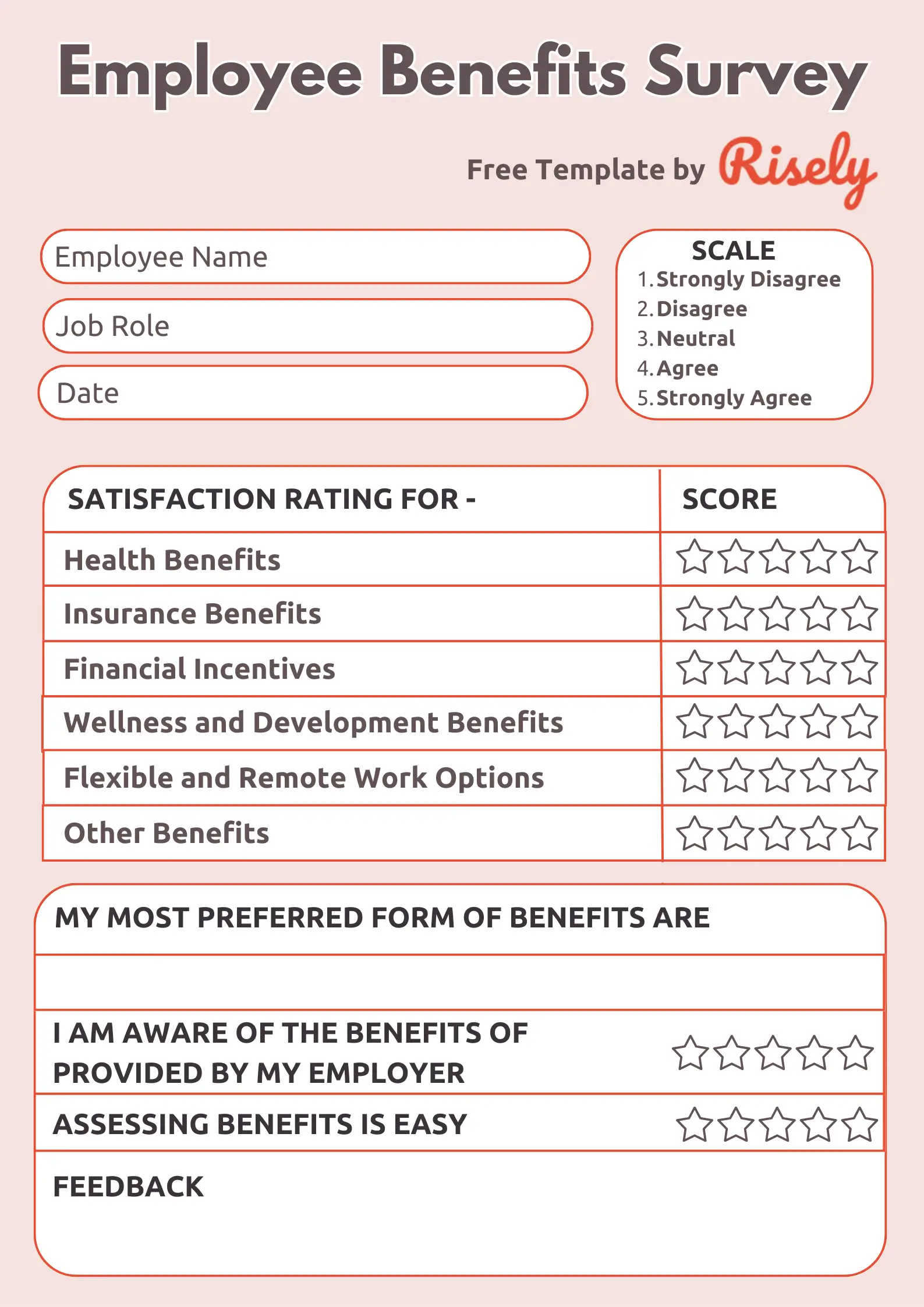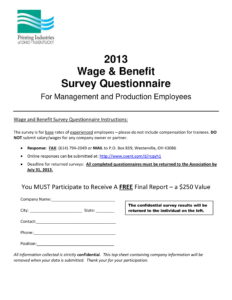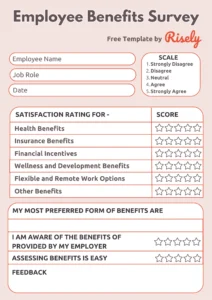In today’s dynamic workplace, attracting and retaining top talent is more challenging than ever. Employees are increasingly discerning, not just about their roles but also about the total value package their employer offers. Getting compensation and benefits right isn’t just about competitive salaries; it’s about understanding what truly motivates and supports your team. This complex landscape requires a systematic approach to ensure your offerings are aligned with both market standards and employee expectations.

That’s where a well-designed compensation and benefits survey template becomes an invaluable tool. It’s your secret weapon for gathering crucial insights directly from your workforce, allowing you to make informed, data-driven decisions that foster a positive and productive environment. Let’s dive into why this template is so essential and what elements you should consider including.
Why Your Business Needs a Compensation and Benefits Survey Template
Imagine trying to navigate a ship without a map. That’s a bit like running a business without a clear understanding of your employees’ perceptions of their compensation and benefits. A robust survey template provides that map, offering a structured way to collect feedback, identify trends, and pinpoint areas where your current offerings might be falling short or excelling. It moves you beyond assumptions, giving you concrete data to work with.
Beyond just identifying gaps, using such a template empowers you to benchmark your offerings against industry standards and competitors. Are you paying fairly? Are your benefits packages competitive enough to attract the best in the field? Without this direct feedback, you might be guessing, potentially overspending in some areas or, more critically, underpaying in others, leading to regrettable attrition of valuable employees.
Moreover, a well-executed survey can significantly boost employee morale and engagement. When your team sees that you are actively seeking their input on something as vital as their compensation and benefits, it signals that their well-being and contributions are valued. This proactive approach demonstrates transparency and a commitment to creating a supportive work environment, which can translate into higher productivity and loyalty.
Ultimately, this data-driven approach allows you to optimize your budget allocation. Instead of throwing resources at benefits that employees don’t value, you can strategically invest in those that truly resonate, providing the most impact for your spend. It’s about smart resource management, ensuring every dollar spent on your people delivers maximum return.
Key Benefits You’ll Unlock
- Retain top talent by understanding and addressing their needs.
- Attract new skilled professionals with competitive and appealing packages.
- Ensure fair and equitable pay practices across your organization.
- Improve employee morale and productivity through perceived value and support.
- Make data-driven budget decisions for optimal resource allocation.
- Identify and address potential compliance issues or inequities.
What to Include in Your Compensation and Benefits Survey Template
Now that we understand the "why," let’s talk about the "what." A truly effective compensation and benefits survey template goes beyond simple salary questions. It needs to be comprehensive enough to capture the nuances of what employees value, while also being concise enough to ensure a high completion rate. Think of it as a holistic snapshot of your total rewards strategy from the employee’s perspective.
First, you’ll want to cover the core compensation elements. This includes base salary, of course, but also delves into bonuses, commissions, and any other performance-based incentives. It’s helpful to ask about their understanding of the pay structure and how they perceive their pay relative to market rates and internal equity. This section helps you gauge satisfaction with direct financial rewards.
Next, shift your focus to the benefits side. This is often where companies have the most opportunity to differentiate themselves. Think about health insurance plans, retirement savings options like 401(k)s, paid time off, and various leave policies. Don’t forget to include other perks such as professional development opportunities, wellness programs, flexible work arrangements, and even seemingly smaller benefits like free snacks or gym memberships. These "soft" benefits can significantly influence an employee’s overall job satisfaction.
It’s also crucial to include sections for demographic information (handled carefully to maintain anonymity) and, importantly, open-ended feedback. Demographics can help you segment data to see if different groups have different priorities. Open-ended questions provide qualitative insights that numbers alone can’t capture, offering valuable context and revealing issues or ideas you might not have considered. A comprehensive compensation and benefits survey template should allow employees to articulate their thoughts freely, providing a rich tapestry of feedback.
Here are some key categories to consider for your template:
- **Employee Demographics:** (Optional, but useful for segmentation – e.g., department, tenure, role level).
- **Base Salary and Pay Structure:** Questions about satisfaction with current pay, understanding of pay grades, and perception of internal/external equity.
- **Bonus and Incentive Programs:** Satisfaction with current bonus structure, understanding of criteria, and perceived fairness.
- **Health and Wellness Benefits:** Coverage quality, options available (medical, dental, vision), wellness programs, mental health support.
- **Retirement Plans:** Satisfaction with 401(k) match, investment options, and overall perceived security.
- **Paid Time Off and Leave Policies:** Vacation days, sick leave, parental leave, bereavement leave – perceived adequacy and flexibility.
- **Professional Development Opportunities:** Training programs, tuition reimbursement, career advancement support.
- **Work-Life Balance Perks:** Flexible hours, remote work options, childcare support, employee assistance programs.
- **Overall Satisfaction and Priorities:** General satisfaction with the total compensation package and questions about what benefits employees value most or would like to see added.
- **Open-Ended Feedback:** A section for employees to provide qualitative comments, suggestions, or concerns that weren’t covered by structured questions.
By systematically gathering and analyzing these insights, you’re not just reacting to problems; you’re proactively shaping a competitive and attractive work environment. It’s about fostering a culture where employees feel valued, understood, and fairly rewarded for their contributions. Regularly utilizing a robust survey allows your organization to stay agile, adapting your offerings to meet the evolving needs and expectations of your most valuable asset: your people.

